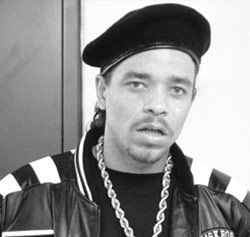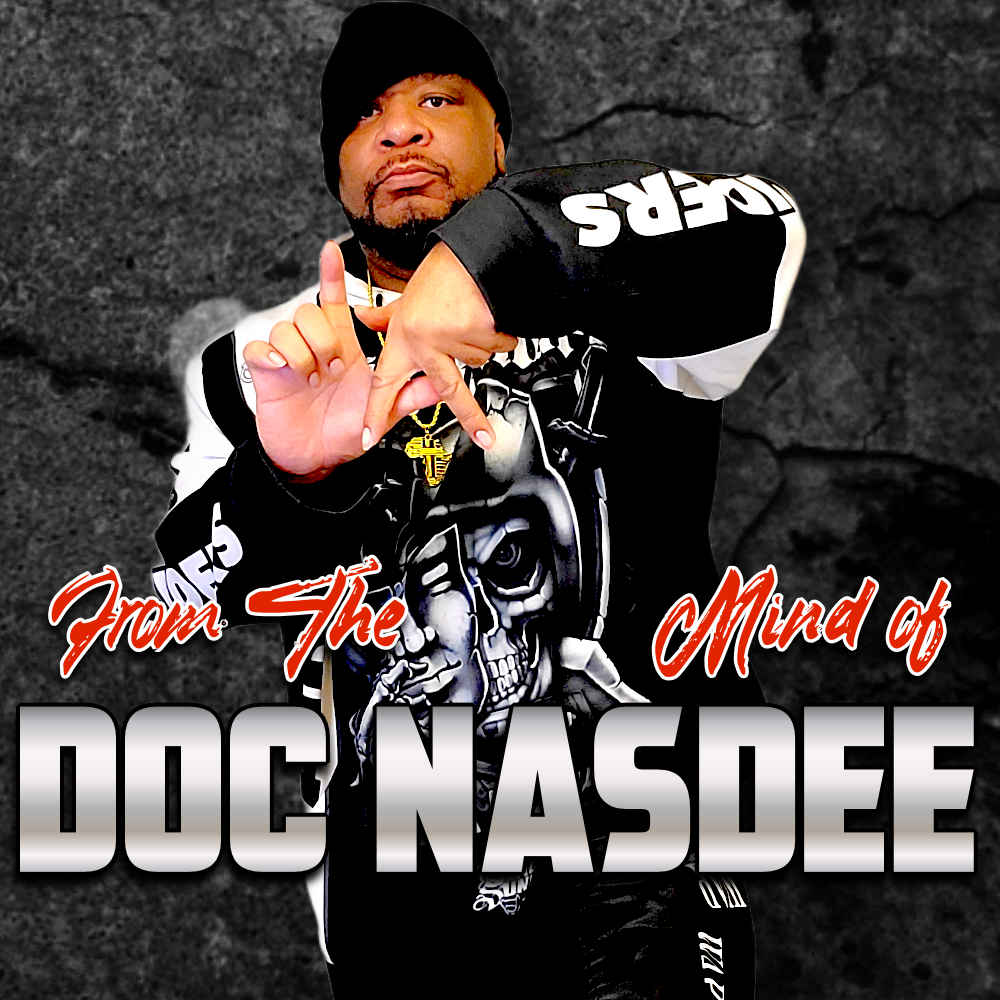
Story number 2 in this celebration of Hip-Hop History Month. I’m going to try to tie these together as best I can. Today’s story is on DJ Tracy, who later became Ice T. Let’s get it!Born Tracy Marrow in Newark, New Jersey, on February 16, 1958. He grew up in Summit, New Jersey, with his parents.
When Ice-T was in third grade, his mother suddenly died of a heart attack. He says, “My mother was a very supportive and smart woman, and I know she cared about me, although she wasn’t very affectionate toward me. I only have a few specific memories of her, vague and distant, like some grainy home movie, someplace in the back of my mind.” Just four years later, his dad also suffered a fatal heart attack. “I was still so young that the experiences of both of my parents’ deaths are kind of blurred together in my mind. And being an only child, I was going through all of it in my own little bubble,” says Ice-T.
In the early 1980s, Ice-T spent four years in the United States Army, after which he returned to Los Angeles and took up a life as a self-styled hustler. Crime paid for a time, allowing Ice-T to take impromptu trips to the Bahamas and collect over 350 pairs of sneakers, but soon his addiction to the high life began to fade. In an interview, Ice-T recalled his breaking point: “I had a friend who I looked up to, ’cause he made more money than me. And he said, ‘Yo, Ice, you got a chance. Do that rap thing.’ And that word ‘chance’ messed up my mind. And I just gave up hustling completely.”
Because every hip-hop artist needs a nom de guerre, “Ice-T” came into being with help from author Robert Maupin Beck III, whose pen name “Iceberg Slim” became Tracy Marrow’s inspiration. After spending a few years honing his craft by creating music for videos and releasing various recordings, Ice-T signed with Sire Records in 1987. Later that year, he released Rhyme Pays, his debut album, which eventually went gold. His recording of the theme song for Dennis Hopper’s gang-themed movie Colors (1987) also garnered the new artist plenty of attention. The movie explored life in the Los Angeles projects and marked the beginning of Ice-T’s controversial depictions of South Central in his artistic work. When the Black community pushed back against Colors’ cultural critique, Ice-T said, “People should give Dennis Hopper credit—he de-glamorized the situation. He just showed the street gangsters. He didn’t show the kids wearing their diamonds and cruising in their Ferraris.”
In 1982, Ice-T met producer Willie Strong from Saturn Records. In 1983, Strong recorded Ice-T’s first single, “Cold Wind Madness”, also known as “The Coldest Rap”, an electro hip-hop record that became an underground success, becoming popular even though radio stations did not play it due to the song’s hardcore lyrics. That same year, Ice-T released “Body Rock”, another electro hip-hop single that found popularity in clubs. In 1984, Ice-T released the single “Killers”, the first of his political raps, and then was a featured rapper on “Reckless”, a single by DJ Chris “The Glove” Taylor and (co-producer) David Storrs. This song was almost immediately followed up with a sequel entitled “Reckless Rivalry (Combat)”, which was featured in the Breakin’ sequel, Breakin’ 2: Electric Boogaloo, however it was never featured on the soundtrack album and, to this day, has never been released. Ice later recorded the songs “Ya Don’t Quit” and “Dog’n the Wax (Ya Don’t Quit-Part II)” with Unknown DJ, who provided a Run–D.M.C.-like sound for the songs.
Ice-T received further inspiration as an artist from Schoolly D‘s gangsta rap single “P.S.K. What Does It Mean?“, which he heard in a club. Ice-T enjoyed the single’s sound and delivery, as well as its vague references to gang life, although the real life gang, Park Side Killers, was not named in the song.
Ice-T decided to adopt Schoolly D’s style, and wrote the lyrics to his first gangsta rap song, “6 in the Mornin’“, in his Hollywood apartment, and created a minimal beat with a Roland TR-808. He compared the sound of the song, which was recorded as a B-side on the single “Dog’n The Wax”, to that of the Beastie Boys. The single was released in 1986, and he learned that “6 in the Mornin'” was more popular in clubs than its A-side, leading Ice-T to rap about Los Angeles gang life, which he described more explicitly than any previous rapper. He intentionally did not represent any particular gang, and wore a mixture of red and blue clothing and shoes to avoid antagonizing gang-affiliated listeners, who debated his true affiliation.
Ice-T finally landed a deal with a major label Sire Records. When label founder and president Seymour Stein heard his demo, he said Ice-T sounded like Bob Dylan. Shortly after, he released his debut album Rhyme Pays in 1987 supported by DJ Evil E, DJ Aladdin and producer Afrika Islam, who helped create the mainly party-oriented sound. The record wound up being certified gold by the Recording Industry Association of America. That same year, he recorded the title theme song for Dennis Hopper‘s Colors, a film about inner-city gang life in Los Angeles. His next album Power was released in 1988, under his own label Rhyme Syndicate, and it was a more assured and impressive record, earning him strong reviews and his second gold record. Released in 1989, The Iceberg/Freedom of Speech… Just Watch What You Say! established his popularity by matching excellent abrasive music with narrative and commentative lyrics. In the same year, he appeared on Hugh Harris‘ single “Alice”.
In 1991, he released his album O.G. Original Gangster, which is regarded as one of the albums that defined gangsta rap. On OG, he introduced his heavy metal band Body Count in a track of the same name. Ice-T toured with Body Count on the first annual Lollapalooza concert tour in 1991, gaining him appeal among middle-class teenagers and fans of alternative music genres. The album Body Count was released in March 1992. For his appearance on the heavily collaborative track “Back on the Block“, a composition by jazz musician Quincy Jones that “attempt[ed] to bring together black musical styles from jazz to soul to funk to rap”, Ice-T won a Grammy Award for the Best Rap Performance by a Duo or Group, an award shared by others who worked on the track including Jones and fellow jazz musician Ray Charles.
Controversy later surrounded Body Count over its song “Cop Killer“. The rock song was intended to speak from the viewpoint of a criminal getting revenge on racist, brutal cops. Ice-T’s rock song infuriated government officials, the National Rifle Association, and various police advocacy groups. Consequently, Time Warner Music refused to release Ice-T’s upcoming album Home Invasion because of the controversy surrounding “Cop Killer”. Ice-T suggested that the furor over the song was an overreaction, telling journalist Chuck Philips “…they’ve done movies about nurse killers and teacher killers and student killers. Arnold Schwarzenegger blew away dozens of cops as the Terminator. But I don’t hear anybody complaining about that”. In the same interview, Ice-T suggested to Philips that the misunderstanding of Cop Killer, the misclassification of it as a rap song (not a rock song), and the attempts to censor it had racial overtones: “The Supreme Court says it’s OK for a white man to burn a cross in public. But nobody wants a black man to write a record about a cop killer”.
Ice-T split amicably with Sire/Warner Bros. Records after a dispute over the artwork of the album Home Invasion. He then reactivated Rhyme Syndicate and formed a deal with Priority Records for distribution. Priority released Home Invasion in the spring of 1993. The album peaked at No. 9 on Billboard magazine’s Top R&B/Hip-Hop Albums and at No. 14 on the Billboard 200, spawning several singles including “Gotta Lotta Love“, “I Ain’t New Ta This” and “99 Problems” – which would later inspire Jay-Z to record a version with new lyrics in 2003. In 2003 he released the single “Beat of Life” with Sandra Nasić, Trigga tha Gambler and DJ Tomekk and placed in the German charts.
Ice-T had also collaborated with certain other heavy metal bands during this time period. For the film Judgment Night, he did a duet with Slayer on the track “Disorder”. In 1995, Ice-T made a guest performance on Forbidden by Black Sabbath. Another album of his, VI – Return of the Real, was released in 1996, followed by The Seventh Deadly Sin in 1999.
His first rap album since 1999, Gangsta Rap, was released on October 31, 2006. The album’s cover, which “shows [Ice-T] lying on his back in bed with his ravishing wife’s ample posterior in full view and one of her legs coyly draped over his private parts”, was considered to be too suggestive for most retailers, many of which were reluctant to stock the album. Some reviews of the album were unenthusiastic, as many had hoped for a return to the political raps of Ice-T’s most successful albums.
The fact is, this write up could go on for pages and pages and pages. Why? Because every single day, Ice-T is adding to his story. He has also been instrumental to my direction and approach to the culture. A day didn’t go by that I didn’t wish I could become a member of Rhyme Syndicate. He has created so many lanes, his finger print is undeniable. That’s why, he would always be considered “The Godfather” of the West Coast, to me. Others claim that title, sure, but who had a resume that can possibly compare? I’ll wait. Ice-T is an undeniable GOAT. I said what I said.
